From Digital Twin to Cloning Earth | An Exclusive Interview Between UE & 51WORLD
Recently, a video titled “51earth.com Officially Launched” has Gained a lot of traction on Bilibili, the Chinese version of YouTube. The video quickly reached nearly 1 million views in just a few weeks, it has become a hot topic. Interestingly, the video doesn’t touch on any current news topics, it even lacks thrilling plots and vivid characters. Yet, this simple and pure high-definition footage and technical demo about “Earth” has attracted numerous fans and followers.
BILIBILI:51earth.com 正式上线
YOUTUBE:Reimagine Reality: Clone the World with 51EARTH!
The video was released by 51WORLD, a company well-known to those familiar with the digital twin industry. Over the years, their growth has kept pace with UE’s development in the digital twin field. From the beginning of VR technology use in real estate viewings decades ago, to later advances in digital twins applied in smart cities and smart factories, 51WORLD has consistently sought technological innovation and development. Reflecting on the past, we still vividly remember the “Cloning Shanghai” UE4 project from a few years ago. In 2017, 51WORLD proposed the “Earth Cloning Plan,” which some might have found a bit extravagant or hard to comprehend. However, with the launch of 51Earth, more people have been able to see 51WORLD gradually delivering on their promises through solid technology. This has led to a fresh perspective on both 51WORLD and the Unreal Engine.
In a recent visit to 51WORLD’s headquarters in Shanghai, we took the opportunity to delve into their groundbreaking journey from digital twins to the ambitious project of cloning Earth. Here is what we found.
Q: Can you summarize the core essence of 51WORLD? What inspired this name?
A: Earth’s total surface area is 510 million square kilometers, and that is origin of the name 51WORLD. We are committed to creating a digital replica of the earth that is real, complete and permanent, which in turn, will make the real world more efficient, safe and comfortable to live in.
Q: How do you use Unreal Engine in your different areas of business?
A: 51WORLD boasts four main sub-brands:
51Earth, focusing on Earth cloning technology. 51Aes, dedicated to digital twins in various sectors. 51Sim, centered on traffic and autonomous driving simulation. 51Meet, exploring the metaverse and immersive experiences.The Unreal Engine supports these four business areas with its core real-time rendering capabilities. It integrates seamlessly with cloud rendering and front-end technologies.
Q: From digital twins to cloning the Earth, when was Unreal Engine first applied?
A: In 2015, we established our team to create VR building displays, marking our first use with unreal Engine 4. We were drawn to UE4’s real-time rendering capabilities and efficiency of its tools. As our business evolved, Unreal Engine also achieved strong continuity as we developed custom kits based on it and steadily accumulated enhancements from UE4.15 to 4.26, and now UE5. Our projects cover applications from VR buildings, VR games, digital twin, transportation and intelligent driving, metaverse, to digital Earth.
Q: From digital twins to cloning Earth, transitioning from UE4 to UE5, what technologies of UE have significantly impacted the 51Earth projects?
A: From UE4 to UE5, the upgrade from float to double, precision has greatly expanded computational capabilities, supporting planetary-level work.
UE5’s Nanite technology substantially decreases VRAM usage, offers higher precision, and enhances model rendering scalability. A key feature of 51Earth’s real-time generation technology is its reliance on Nanite-based modular generation, which enables the rendering of more intricate and precise models.
UE5’s VSM, compared to traditional CSM, enables longer-distance, higher-precision projections, which greatly benefit the rendering quality of 51Earth.
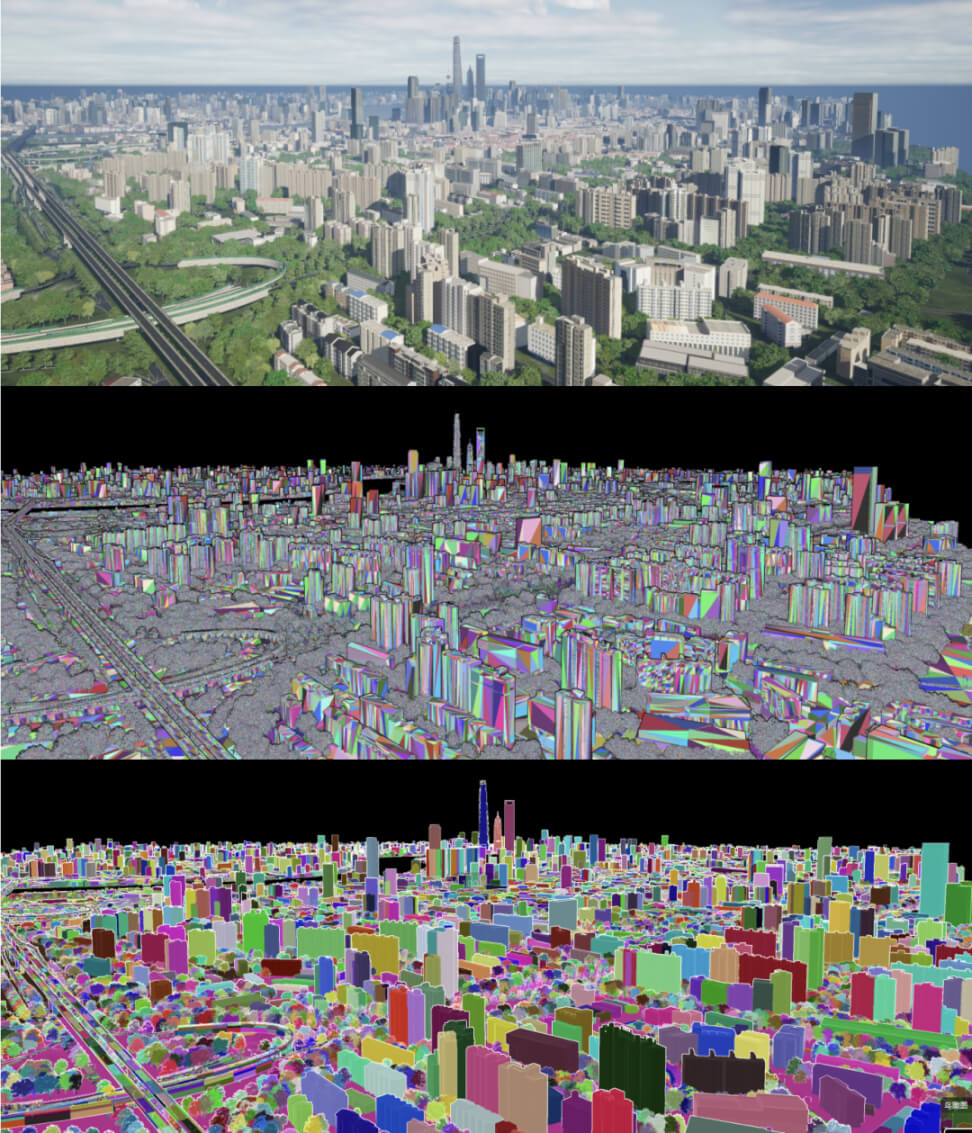 Comparing UE5's VSM with traditional CSM rendering quality
Comparing UE5's VSM with traditional CSM rendering quality Q: If we were to divide 51WORLD’s growth into stages, what stage is 51Earth currently in?
A: 51WORLD’s vision is creating a real, complete, and permanent digital twin world, which progresses through five stages:
W1 Static World (2015–2017) W2 Dynamic World (2017–2020) W3 Semi-Simulated World (2020–2023) W4 Fully Simulated World (2023–2026) W5 Digital Twin World (2026–2030)Currently, 51Earth is in the W4 stage.
Q: What exactly is the product 51Earth?
A: We recently launched a demo of 51Earth, which allows users to smoothly browse the entire Earth from space to buildings.
The underlying technology of 51Earth relies on years of experience in automatic generation and digital twins to recreate terrains, buildings, roads, bodies of water, vegetation, and more. The client download is about 5GB, and it can run smoothly on PCs with graphics cards at the 2060 level or higher. Users can freely jump to any area by searching for cities, regions, or landmark buildings for real-time 3D tours.
This demo validates the basic technical route for cloning Earth, and in the future, we hope to cooperate in fields like city-level high-quality digital assets and semantics-based real-time generation technology.
Product features:
Semantics-based generation involves continually gathering and refining vectors and semantic descriptions. This approach offers benefits over using traditional model data, which can be limited by the iterative nature of model craftsmanship. Real-time generation: Changes occur immediately as data sources change, and there is no need for offline generation processes, which significantly benefits capacity and timeliness. Real-time editing capability: Not only editable in the editor but also during runtime, and can be altered using other data editing tools to achieve scene changes. Pyramid data structure: Ensures smooth performance at any viewing angle. Network data streaming: Reduces asset size significantly.Q: When did the idea of 51Earth first come out?
A: At the third annual Earth Cloning conference in late 2019, we publicly showcased a real-time demo from Earth to the entire region of Shanghai for the first time. At that time, we could generate a city spanning thousands of square kilometers with high precision in 12 hours. We have been continually optimizing generation effects, performance, usability, and scalability, which has helped us make the leap from park-level to city-level in the digital twin field.
As hardware and Unreal Engine technology have improved, our generation technology has evolved, we began to believe that replicating the entire Earth might be possible.
In October 2023, we officially started the 51Earth plan, shifting from inconvenient offline generation technologies to real-time generation. After five months of effort, we confirmed that real-time generation could indeed accomplish the cloning of Earth.
Q: What did you think when you first heard the idea of cloning Earth? How do you address the challenge of Earth’s massive scale?
A: The Earth’s surface area is 510 million square kilometers. We face two daunting tasks and challenges: long generation times and massive data volumes.
Issue of long generation times:
Our major demos at the 3rd to 6th Earth Cloning conferences used offline generation technology, showcasing presentation from a planetary level to a cluster of cities. Estimates indicated that completing a full Earth generation with offline technology would take hundreds of years. However, real-time generation technology allows for immediate generation, creating content wherever the mouse is dragged. While offline generation of a tile takes minutes, real-time generation demands millisecond-level speeds. Fortunately, our prior technological explorations helped us balance generation speed and quality.
Issue of large data volumes:
Semantic-based real-time generation only requires storage of original semantic data, not model data, significantly reducing storage requirements. Even so, the data volume is still too large to run entirely on local clients.
We noticed that each user accesses only a very small part of Earth. Online data streaming is quite common in the geoinformation industry, so we decided to use online data access to minimize asset size.
With our extensive experience and expertise, particularly in large-scale world scheduling, we successfully created the Earth cloning demo.
Q: How are large terrains generated, and what challenges have been encountered?
A: Large Terrain Rendering Challenges:
For large terrain rendering, we use a common quadtree pyramid scheduling system to ensure visual precision at any distance and stabilize CPU and GPU costs. This content can refer to UE’s Landscape code, but UE’s Landscape and large world systems are still not sufficient for planetary-scale applications, so we had to implement our scene proxy.
Large Terrain Data Loading Challenges:
Similarly, we maintain a pyramid structure for data, reading corresponding block data and timely releasing unused data to ensure memory and GPU resources do not continuously accumulate, maintaining low overhead.
Edge Integration and Natural Transitions:
The entire LOD also needs to consider edge integration and natural transitions. Different levels of the pyramid need to stitch together the terrain edges to avoid gaps.
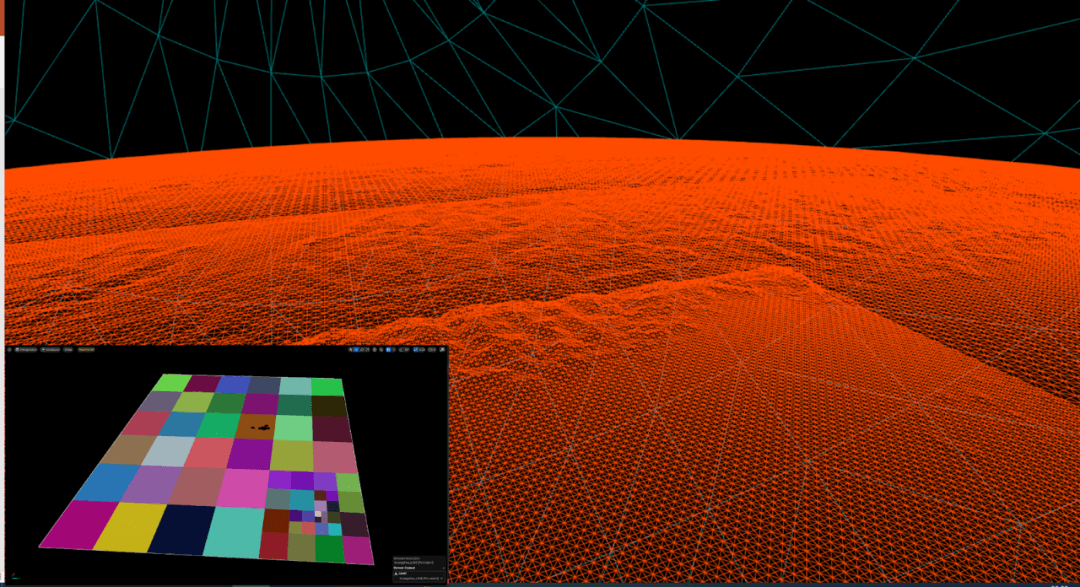 51Earth's large-scale terrain rendering, data loading, and seamless LOD transitions
51Earth's large-scale terrain rendering, data loading, and seamless LOD transitions Q: What are Human-Made Structures and Landscape Generation Methods?
The generation of human-made structures involves using manual modeling, with coordinate information allowing the runtime to display surface buildings in the correct locations. In the future, surface buildings will adopt more universal model formats suitable for streaming loads, such as GLTF and USD formats, facilitating creators to upload their own models to collectively create the entire Earth.
Q: How is the natural ecological system modeling implemented in Earth?
A: The modeling of natural ecological systems utilizes various professional institutions’ land classifications, ecological classifications, and vegetation density maps.
This ensures that the trees we plant adapt to different types and densities according to the region.
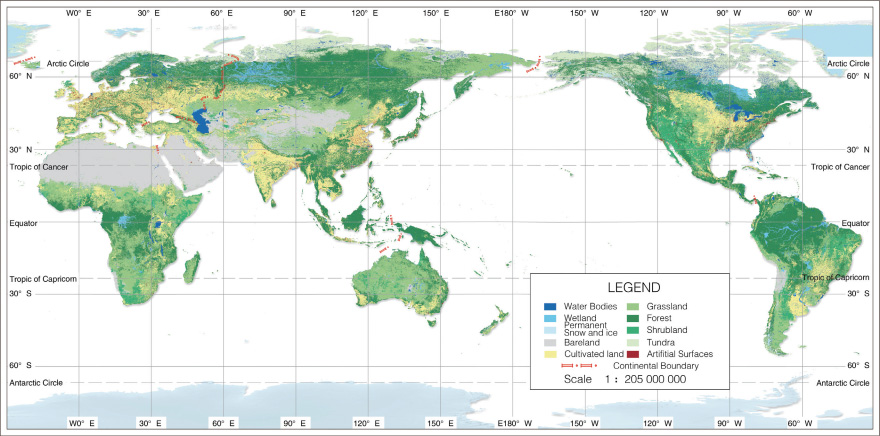 GlobeLand 30
GlobeLand 30 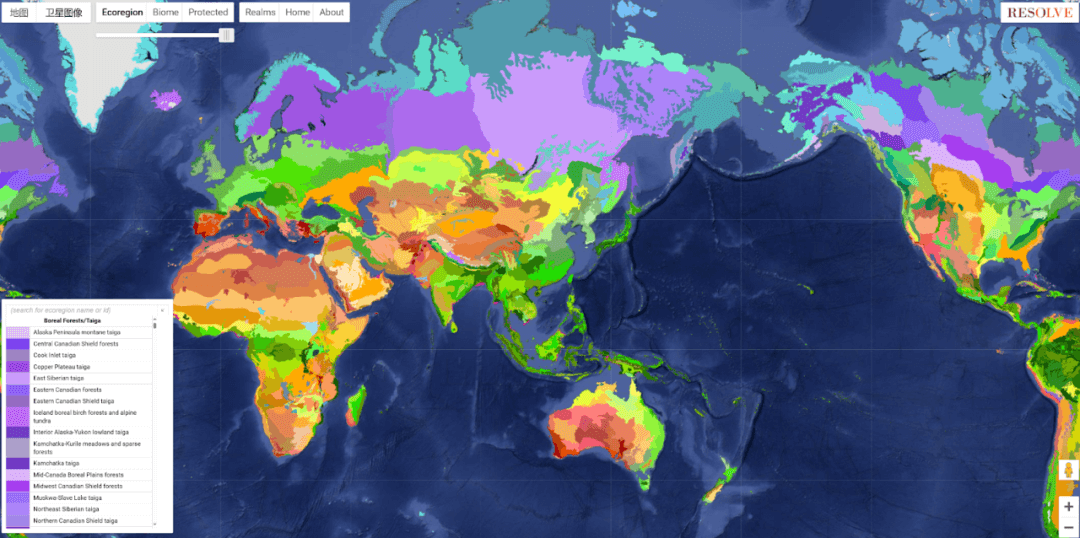 Global Ecological Classifications Provided Data Support
Global Ecological Classifications Provided Data Support Q: How is the Lighting and Natural Environment Implementation?
A: We leverage UE5’s native robust lighting, atmospheric systems, and engine-provided features like Lumen, AO, and Path Tracer to render highly realistic and natural visual effects (the screenshots compare Riyadh in UE5 (upper image) and a real photograph (the bottom image).
 51Earth uses UE5's lighting and atmosphere system to render realistic visuals compared to real photos of Riyadh, Saudi Arabia.
51Earth uses UE5's lighting and atmosphere system to render realistic visuals compared to real photos of Riyadh, Saudi Arabia. 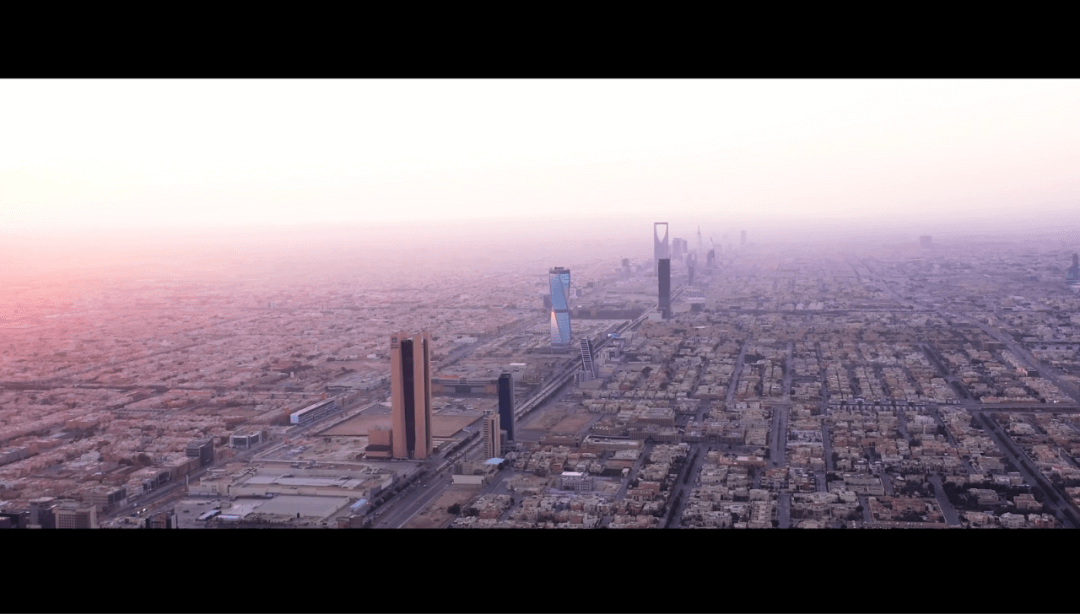 51Earth uses UE5's lighting and atmosphere system to achieve realistic natural visual effects, comparing them with actual photographs of Riyadh, Saudi Arabia.
51Earth uses UE5's lighting and atmosphere system to achieve realistic natural visual effects, comparing them with actual photographs of Riyadh, Saudi Arabia. Q: What are the hardware Requirements and Optimizations for Running Earth Locally?
A:
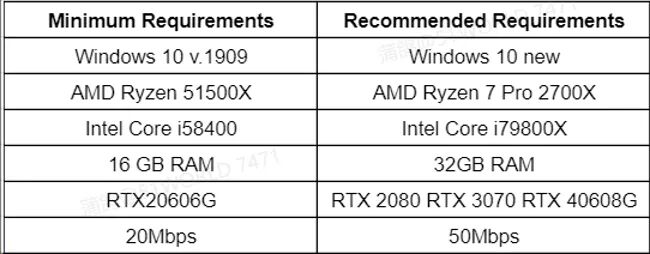 Minimum and Recommended Hardware Requirements for Local Operation of the 51Earth Client
Minimum and Recommended Hardware Requirements for Local Operation of the 51Earth Client Currently, the client only supports DirectX12 (SM6) and requires graphics cards of the 20 series or higher.
Overall optimization experience includes a combination of dynamic and static rendering approaches:
Dynamic Scheduling:
As a planetary-level application, dynamic scheduling is essential. It calculates the bandwidth from SSD to memory to GPU, appropriately dividing data and rendering resources. We maximize the use of GPU concurrency, as our entire terrain system is GPU-driven. Managing the CPU cache and GPU cache well, ensuring a balance in loading and recycling, is crucial to prevent unnecessary memory and GPU occupancy during continuous browsing.
Static Rendering:
We control the overall number of triangles and draw calls per frame. Optimizing the modeling approach of nanite models, we manage the upper limit of nanite clusters. We also control the frame’s GPU memory capacity, which is related to artistic resources such as triangles and textures.
Q: How do you see the roles of AI and UE in the future?
A: AI has already demonstrated high consistency in multi-perspective, long-duration images, with good realism and detail in scenes. From the perspective of simulation scenarios, the tasks performed by generative video models are fundamentally similar to those of game engines: one is more controllable and explicit, while the other is data-driven and implicit. Game engines require a high threshold to achieve strong realism, involving modeling or scanning numerous high-quality assets, with the advantages of controllability and editability. AI’s editability and controllability, as demonstrated so far, remain uncertain, presenting significant challenges. Currently, synthetic data is mainly divided into three pathways, physical simulation and graphic rendering, scene reconstruction based on neural radiance fields (NeRF, 3DGaussian, etc.), and generative models based on world models.
The world model-based generative pathway in AI is still in its early stages. Unlike the video creation field, simulation scenarios on a large scale require high certainty, needing to display consistency and physical laws. How to controllably generate more valuable corner cases remains an area for deep exploration, but the potential for future development is vast.
Q: What’s the Current Status and Plans for 51Earth?
A: We are currently focusing on two earth-based products: TWE (The Whole Earth) and UGA (Urban General Asset).
TWE is dedicated to world generation technology, allowing developers to generate a dynamic Earth in real-time using semantic data. We look forward to deep technical cooperation with developers to complete their own versions of Earth.
UGA is aimed at application developers, providing city-level general assets that can smoothly load vast areas of high-precision scenes in the engine and support free editing of the scenes. We plan to launch in at least 100 cities worldwide by September 2025. This will help developers in digital twins, gaming, film, and AI training fields save costs and improve efficiency.
Q: What’s next for 51Earth?
A: We hope that in the future 51Earth will be a product that links city creators with application developers. City creators can build cities in 51Earth like in “Cities: Skylines” and jointly participate in the vision of cloning Earth.
Application developers can develop a variety of games and applications based on city data plus development kits.
Q: Thank you for the Interview, how can we stay updated on 51WORLD and 51Earth?
A: You can follow the latest updates and product developments of 51WORLD and 51Earth through our official websites: 51world.com.cn and 51earth.com. You can also join our Discord for a 51Earth Free Trial!
